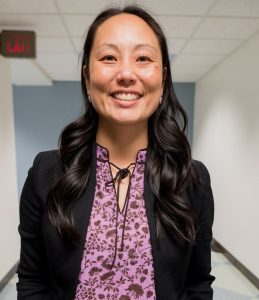MADISON, Wis. — A new study from the University of Wisconsin-Madison may be a gateway for treating blindness.
Researchers at UW-Madison developed a way to grow organized clusters of cells that mimic the retina — a “light-sensitive tissue at the back of the eye” — more than 10 years ago. Retinal cells can sense light, sending what we see to the brain.
David Gamm’s lab developed those clusters. He is a UW-Madison ophthalmology professor and director of the McPherson Eye Research Institute. Throughout 2022, Gamm, alongside other UW-Madison researchers, found that the lab-grown retinal cells responded like healthy, natural retina to a variety of wavelengths and intensities of light.
“We wanted to use the cells from those [cell clusters] as replacement parts for the same types of cells that have been lost in the course of retinal diseases,” Gamm said. “But after being grown in a laboratory dish for months as compact clusters, the question remained — will the cells behave appropriately after we tease them apart? Because that is key to introducing them into a patient’s eye.”
The current research team at UW-Madison broke apart those organized clusters of cells into single cells. The individual retinal cells were able to connect to neighboring cells.
The cells have the ability to “shake hands with” other cell types, enabling them to communicate with other parts of the body. Researchers said they believe this means the retinal cells grown from stem cells “are ready for trials in humans with degenerative eye disorders.”
Retina cells communicate with the brain via synapses. Researchers needed to determine if the lab-grown retinal cells could do this. They did this by infecting a cell with a rabies virus. The rabies virus traveled across a synapse and infected multiple neighboring cells.
“We’ve been quilting this story together in the lab, one piece at a time, to build confidence that we’re headed in the right direction,” Gamm said. “It’s all leading, ultimately, to human clinical trials, which are the clear next step.”
After the synaptic connections were identified, researchers analyzed the cells themselves. Researchers said the cells most likely to form synapses were photoreceptors. Photoreceptors are the cells that are lost in eye diseases such as retinitis pigmentosa, age-related macular degeneration and some eye injuries. The second most common cell type that could form synapses were retinal ganglion cells. Retinal ganglion cells “degenerate in optic nerve disorders [such as] glaucoma.”
“That was an important revelation for us,” Gamm said. “It really shows the potentially broad impact these retinal [cell clusters] could have.”
This research could be the gateway to cell replacement clinical trials, which could potentially treat those who are losing or have lost their eyesight.
Read the full study, published Wednesday, here:




